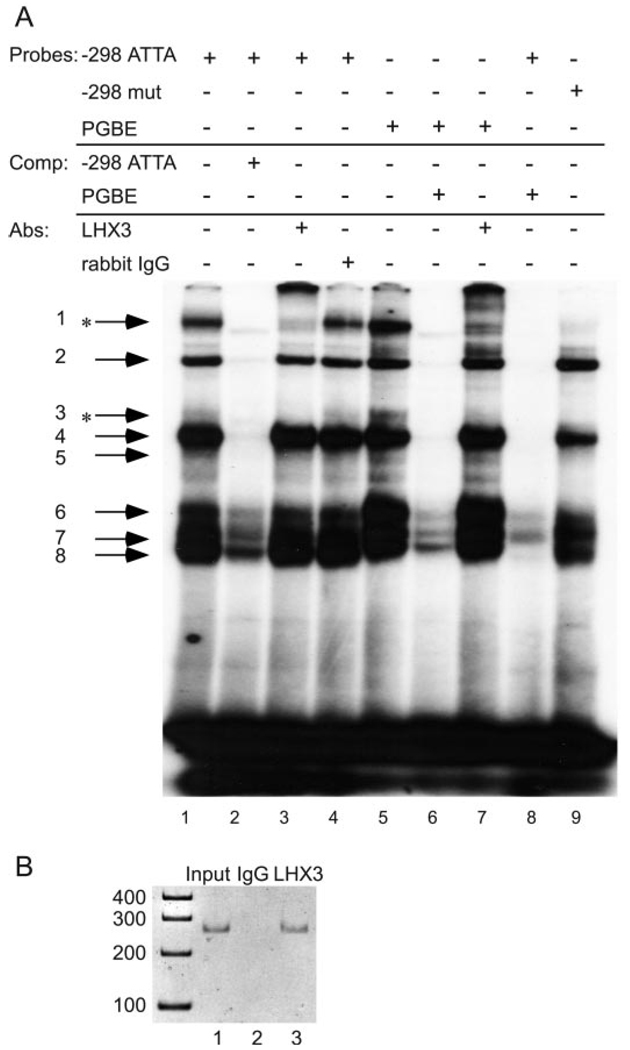FIG. 3.
LHX3 binds the GnRHR promoter in vitro and in vivo. A, EMSA was performed using labeled −298 ATTA spanning −310/−281 of the GnRHR promoter, PGBE, or mutant −298 ATTA (−298mut) oligonucleotide probe with αT3-1 nuclear extracts. Competitions (comp) were performed using 250-fold excess unlabeled oligonucleotide as indicated in the chart. Antibodies (Abs) directed against LHX3 and normal rabbit IgG were included in the reactions as indicated. Specific protein complexes are indicated by arrows and numbered. Complexes diminished by inclusion of the LHX3 antibody are indicated by asterisks. B, ChIP was performed using cross-linked protein/chromatin from αT3-1 cells and an antibody directed against either LHX3 or, as a negative control, against nonspecific normal rabbit IgG. PCR primers flanking the −298 ATTA site were used to detect precipitation of the genomic DNA. PCR amplification was performed on 0.5% chromatin input (lane 1), and chromatin was precipitated with either IgG (lane 2) or Lhx3 (lane 3). This experiment was repeated at least three times.

